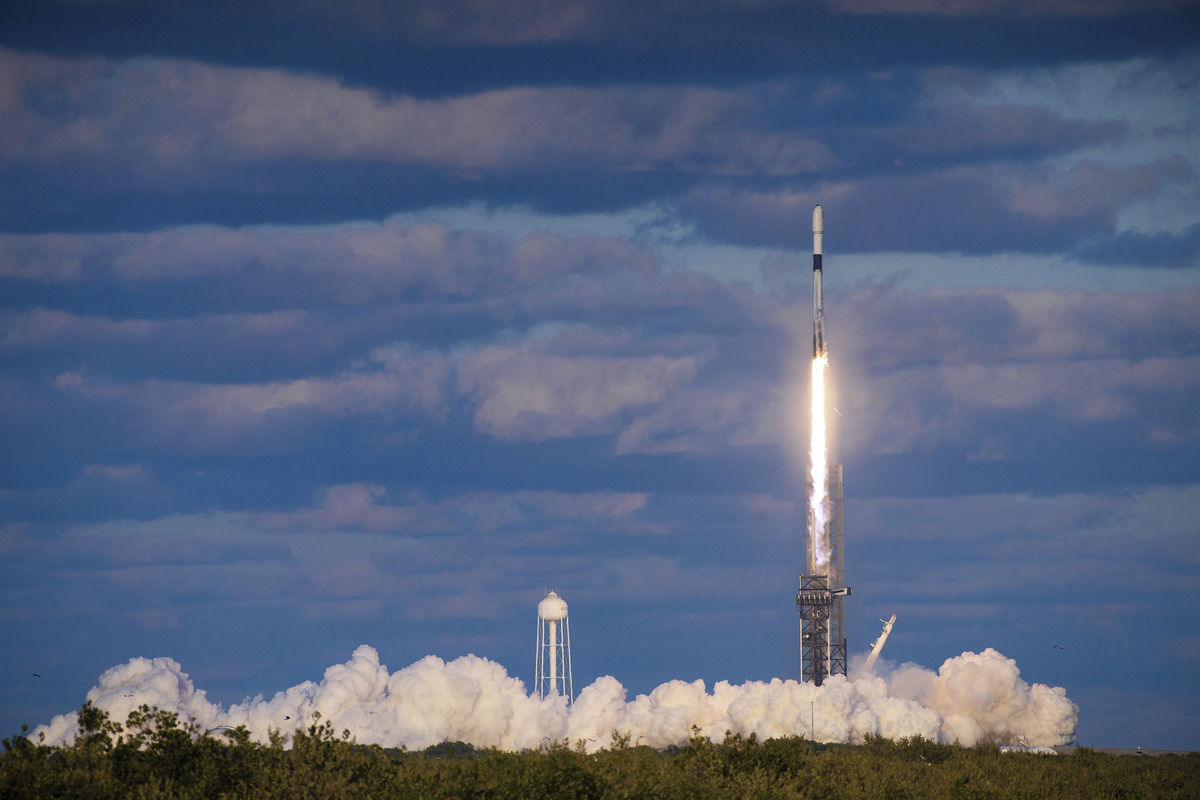
South Korea has successfully launched a fourth spy satellite from a U.S. military base, Seoul’s military said.
Why It Matters
South Korea has doubled down on its efforts to bolster its space footprint in an attempt to stay ahead of its northern neighbor, which has veered away from long-held policy of reconciliation with the south, casting Seoul as its “principal enemy” and upping military programs.
South Korea Defense Ministry via AP
What To Know
South Korea’s Defense Ministry said Seoul had launched a new military spy satellite from the U.S. space base at Cape Canaveral, Florida, using a SpaceX Falcon 9 rocket, according to South Korea’s Yonhap news agency.
The satellite is a synthetic aperture radar (SAR) satellite, which works by sending microwave signals to Earth that are then bounced back to create a detailed radar image, although it looks different from how we are used to seeing satellite images coming out.
Unlike satellites that use optical cameras, SAR satellites don’t need a light source like the sun, so they can operate at night. They are impervious to weather conditions that can shroud optical satellite images.
It is the fourth of five satellites Seoul plans to launch this year to track North Korean activity under a deal with billionaire entrepreneur and U.S. presidential confidant Elon Musk‘s SpaceX firm.
SpaceX said it had launched a Falcon 9 rocket from Cape Canaveral at 8:48 p.m. ET on Monday carrying a satellite belonging to South Korea’s Agency for Defense Development.
South Korea launched the first of its five planned spy satellites in late 2023 from the Vandenberg Space Force Base in California, followed by two more in 2024.
Once the fifth satellite is operational, Seoul will be able to carry out reconnaissance of key North Korean sites every two hours, according to the country’s Hankook Ilbo daily newspaper.
The South Korean military says the satellites will beef up Seoul’s ability to launch pre-emptive strikes on sensitive North Korean military sites deemed a threat to the south, the newspaper reported.
Seoul’s “kill chain” strategy includes planning for preemptive attacks on North Korea’s nuclear and broader missile facilities if there are signs its northern neighbor is intending to use them. Seoul also has its Korea Air and Missile Defense System to intercept incoming attacks, paired with its Korea Massive Punishment and Retaliation (KMPR) plan to hit back at North Korea for any attack on the south.
South Korea said in July 2023 it had examined pieces of a North Korean spy satellite that had crashed into the sea earlier in the year, deeming it had “no military utility as a reconnaissance satellite at all.”
North Korea, which is deeply hostile to South Korea’s alliance with the U.S, then successfully launched a spy satellite in November 2023, quickly saying it had captured “detailed” images of sensitive U.S. sites like the Pentagon, the White House, and facilities housing U.S. nuclear aircraft carriers.
This was condemned by the United Nations, which levels sanctions aimed at limiting Pyongyang’s access to missile technology. The U.S. targeted North Korea with fresh sanctions after the satellite launch.
North and South Korea are still technically at war and have been since an armistice marked the end of the Korean War in 1953.
What People Are Saying
Seok Jong-geon, head of the launch management unit at South Korea’s Agency for Defense Development, said in comments reported by South Korea’s Hankook Ilbo newspaper: “In order to further enhance our space operation capabilities, we will continue to build domestic ground-based launch sites and work to launch satellites using launch vehicles developed with our own technology.”
What Happens Next
The fifth South Korean satellite is expected to launch from the U.S. by the end of the year.
